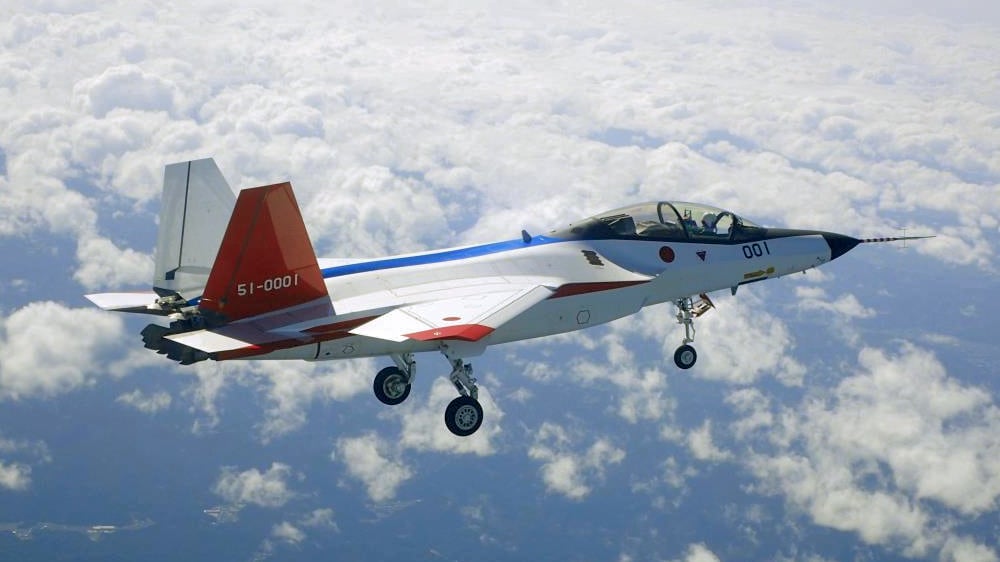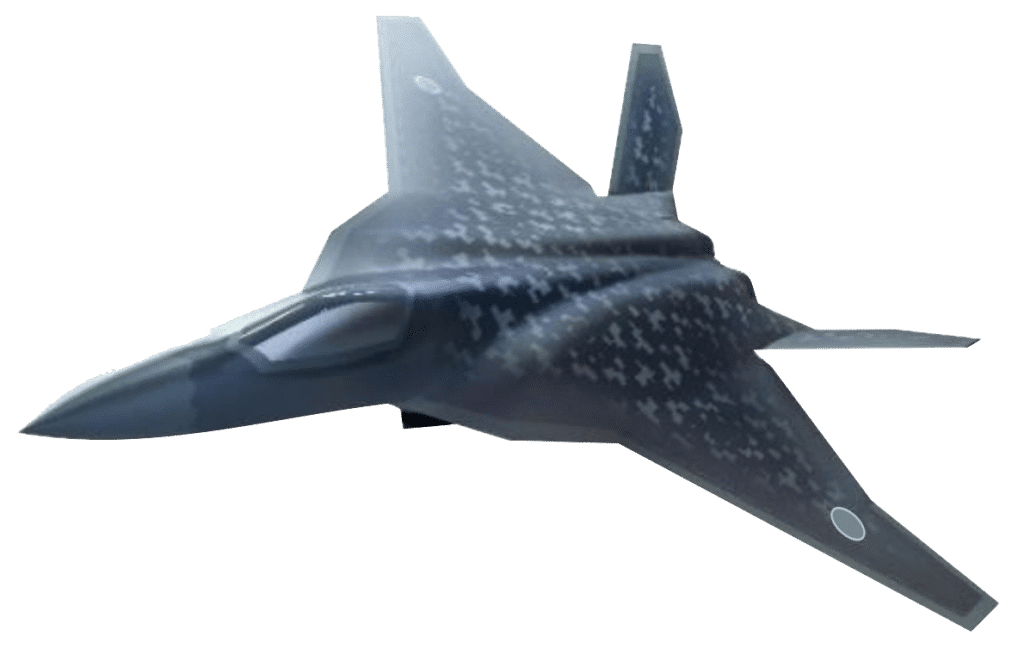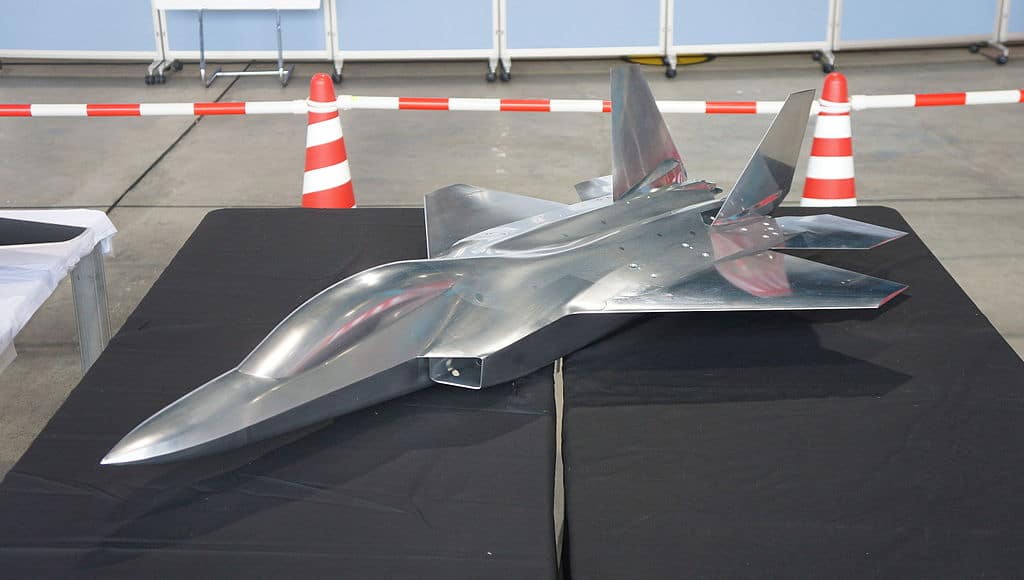Aviation
Meet Japan’s 6th Gen Fighter jet and its mind blowing features
When the United States rejected the sale of F-22 aircraft, Japan began work on a new 6th-generation fighter jet.
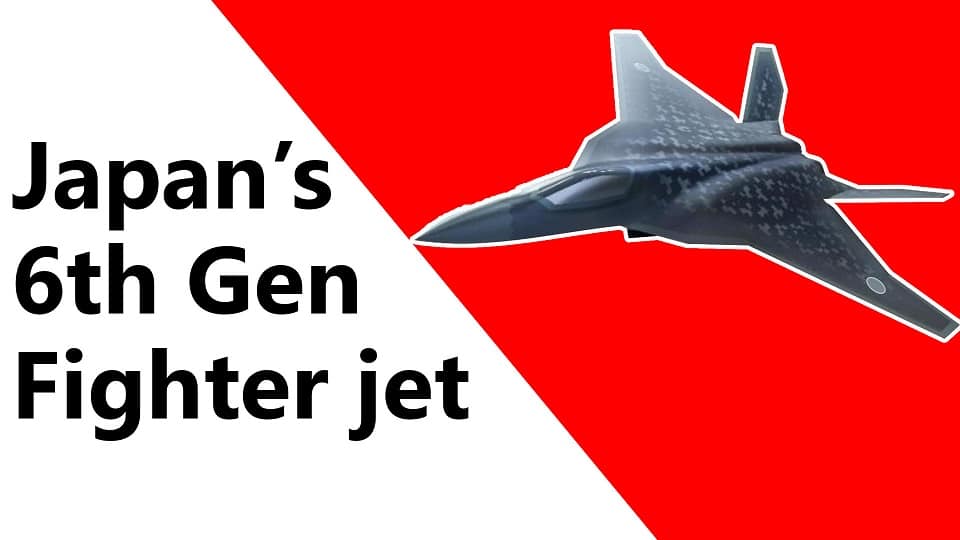
Welcome back to jetline marvel for another thrilling episode. As we all know Building Fighter jets is a difficult task for any aerospace producer. since it necessitates a great deal of material and technological expertise. But what if Japan, the world’s leading innovator in technological fields, creates its own fighter jet and that too a sixth-generation?
When the United States rejected the sale of F-22 aircraft, Japan began work on a new 6th-generation fighter jet.
We shall examine some of the fascinating details regarding this aircraft in this video..
1. The Japan FX scheme is pushed after the US rejected the F 22 for Japan.
The program began in 2009, but because the U.S. Congress forbade the export of the aircraft in order to protect its technological secrets, including its extensive use of stealth, Japan was forced to develop its own modern fighter that would be outfitted with stealth features and other cutting-edge systems.
Aircraft comparison Brazil’s KC-390 vs Japan’s Kawasaki C-2(Opens in a new browser tab)
The Mitsubishi Heavy Industries-built X2 is the first experimental Stealth technology demonstration for the sixth generation of aircraft. The prototypes and stealth technology are learned using this aircraft.
On April 22, 2016, the X-2 completed its first flight, taking off from Nagoya Airfield and landing at Gifu Air Field of the JASDF.
India’s $3 Billion MQ-9 Reaper Drones Deal With US In Advanced Stage(Opens in a new browser tab)
2. It has Fly-by optics feature and 3D vectoring thrust control.
Three paddles are located on each engine nozzle of this aircraft, which has 3D thrust vectoring identical to the system used on the Rockwell X31. That enables fast maneuverability for aircraft and supports multiple flight trajectories.
Additionally, the data is processed 100 times faster than with wires because of the demonstration of fly-by optics, a feature exclusive to this aircraft. It has benefited from immunity to electromagnetic interference.
Additionally, this aircraft has the ability to self-repair its flight controls, allowing it to autonomously detect faults or damage to its flight control surface. maintain, calibrate, and perform controlled flying.
3. The electric actuator is taking the place of the hydraulic one.
The flaps and other oscillate devices of fighter jets are typically operated by hydraulic actuators, however, Japan is utilizing electric actuators for the FX program. The hydraulic actuator takes up more room and places more restrictions on designs, whereas the electric actuator can be fitted to the design. enabling greater freedom in the aircraft’s body design. Body weight reduction and increased aircraft mobility are other benefits. The control, power, and leg/brake systems of the fighter are all equipped with electronic actuators.
4. Adhesive bondings are replacing fasteners.
It is also claimed that a new fighter aircraft level is being developed. The adhesive moulding will be replaced with fewer fasteners on this aircraft. by using adhesive molding to bind composite materials together, fasteners can be eliminated. The “integrated/fasteners structure” technology is the name given to this process. Heat shield technology is positioned around the engines to enable the application of aluminum alloys and carbon fiber reinforced polymer (CFRP) to minimize weight in the vicinity.
5. This aircraft will have the radar of the F35 version.
The F-X uses sensors that are already built into the aircraft to better detect stealth aircraft. The sensors consist of an infrared camera, a passive radio frequency (RF) sensor, and an active electronically scanned array (AESA) radar.
To defend against threats from aircraft, air-to-air missiles, and surface-to-air missiles, the F-X has an RF “self-defense” system. By being informed of the threat and instantaneously and worldwide sabotaging its radio waves, the system accomplishes both ESM and ECM. which sensor is most likely to be found in the wings and tail.
6. Its surface contains several unique coverings.
Most of the 5th gen fighter jets have a special coating on the surface since the FX also special coating. The stealth design will have serpentine air ducts and an internal weapons bay to reduce the amount of radar reflection. It also has a carbon-based material absorber which helps to reduce the detection range from radar threats by about half. It also has the metamaterial also used to reflect radio waves.
7. This engine is more compact but still powerful when compared to the GE F110 engine.
Axial-flow afterburning turbofan with a 6-stage high-pressure compressor and a 3-stage fan, the XF9-1 has dual redundant dual spool construction. The official thrust level for the prototype engine is “11 tonnes” (107 kN) The development of future fighter engines aims at a maximum thrust of 20 tonnes (196 kN)
The XF9 has a high combustion temperature of 1800 °C. It’s notable how little the XF9 is compared to how powerful it is. For instance, the General Electric F110 engine intake on the XF9 is 30% smaller than that on the F-2.
8. It’s claimed that the F-X is larger than the F-22.
The aircraft’s size suggests that the MoD wants it to have a very long range and a huge payload capacity. The Mitsubishi F-2 will be replaced by the next-generation F-3 or F-X, Japan’s first homegrown stealth fighter aircraft. It will be a twin-engine fighter with six internal weapons mountable. As The EuroAsian Times has stated, the fighter jet will complement the smaller F-35 aircraft. F-X, together with Chinese and Russian fighters, might be a generation ahead of those three. By 2035, it is anticipated to be fully functioning.
9. It will be equipped with contemporary armaments.
A microwave weapon will be mounted aboard the F-X to deflect approaching missiles. This aircraft has the ability to control drones and its drone system interfaces with that of the Boeing wingman drone system.
This will be a breakthrough in operating a greater range when compared to deploying drones that can be launched from an aircraft’s weapons bay to reach and target the adversary at a great distance.
10. It is looking for a global partnership to cover research expenditure.
It estimated $48 billion cost of the program. Japan is considering working together with the US and the UK. It may give the UK greater significance than the US for a number of reasons. As of mid-April 2019, several sources claim that the United States was willing to allow Japan access to portions of the F-35’s software in exchange for collaboration on the construction of the F-X fighter. The particular partnership for Japan’s FX program is still to be chosen, though.
A decision has not yet been made about Japan’s interest in helping India develop the AMCA fifth-generation fighter plane.

Airlines
US DOT says Airlines must now pay automatic refunds for cancelled flights
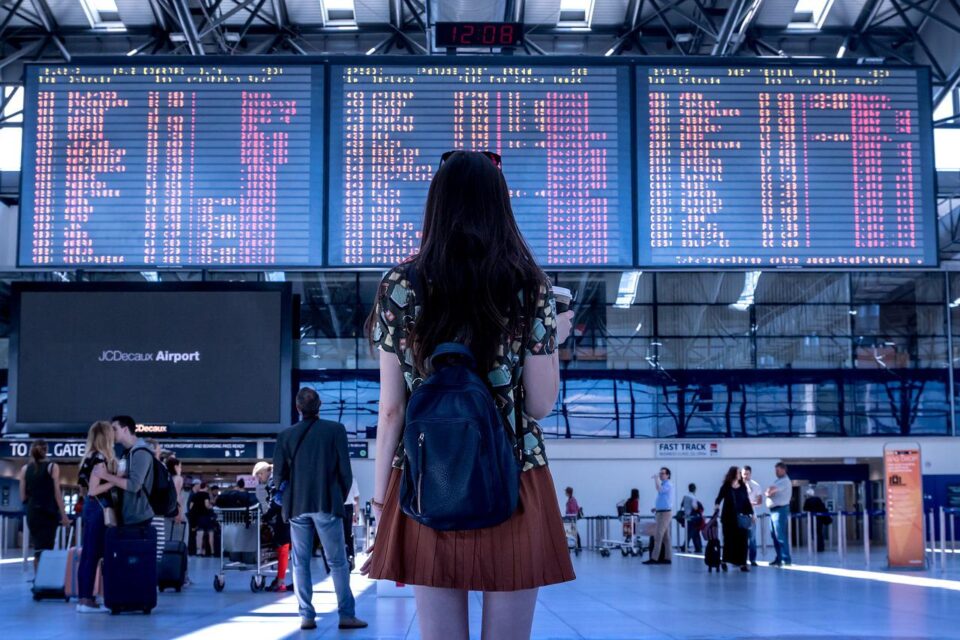
The U.S. Department of Transportation (DOT) has released a final regulation requiring airlines to quickly reimburse passengers with automatic cash refunds when owed, according to a statement made by the Biden-Harris Administration.
Under the new regulation, passengers will find it easier to get refunds when airlines dramatically alter or cancel flights, cause severe delays for checked baggage, or don’t supply the additional services they paid for.
According to a statement from the Biden-Harris Administration, the U.S. Department of Transportation (DOT) has published a final rule mandating airlines to promptly compensate customers with automatic cash refunds when they are eligible. The new rule would make it simpler for customers to receive refunds from airlines in cases when they drastically change or cancel flights, cause significant delays for checked luggage, or fail to provide the extra services they charged for.
Under the latest rule from the USDOT, passengers are guaranteed refunds in several scenarios:
- Canceled or Significantly Changed Flights: Passengers are entitled to refunds if their flight is canceled or significantly altered, including changes in departure or arrival times exceeding 3 hours domestically or 6 hours internationally, departures or arrivals from different airports, increased connections, downgrades in service class, or changes less accommodating to passengers with disabilities.
- Delayed Baggage Return: Passengers filing mishandled baggage reports can claim a refund for checked bag fees if their luggage is not returned within specific timeframes after flight arrival.
- Unprovided Extra Services: If airlines fail to deliver paid extra services like Wi-Fi, seat selection, or inflight entertainment, passengers can request refunds for those fees.
The final rule streamlines the refund process, ensuring it is:
- Automatic: Refunds are issued automatically without requiring passengers to request them.
- Prompt: Airlines must refund credit card purchases within seven business days and other payment methods within 20 calendar days.
- In Original Form of Payment: Refunds are provided in the original payment method used for purchase.
- Full Amount: Passengers receive full refunds minus the value of any portion of transportation already used, including government and airline fees.
Suggest banning family seating junk fees and ensuring that parents can travel with their kids at no additional cost. No airline promised to ensure fee-free family seating prior to efforts from President Biden and Secretary Buttigieg last year. Family seating is now guaranteed free of charge on four airlines, and the Department is working on a plan to eliminate family seating junk fees.
Propose to make passenger compensation and amenities mandatory so that travelers are taken care of when airlines cause flight delays or cancellations.
Airlines
The Nine Freedoms of the Air – Jetline Marvel
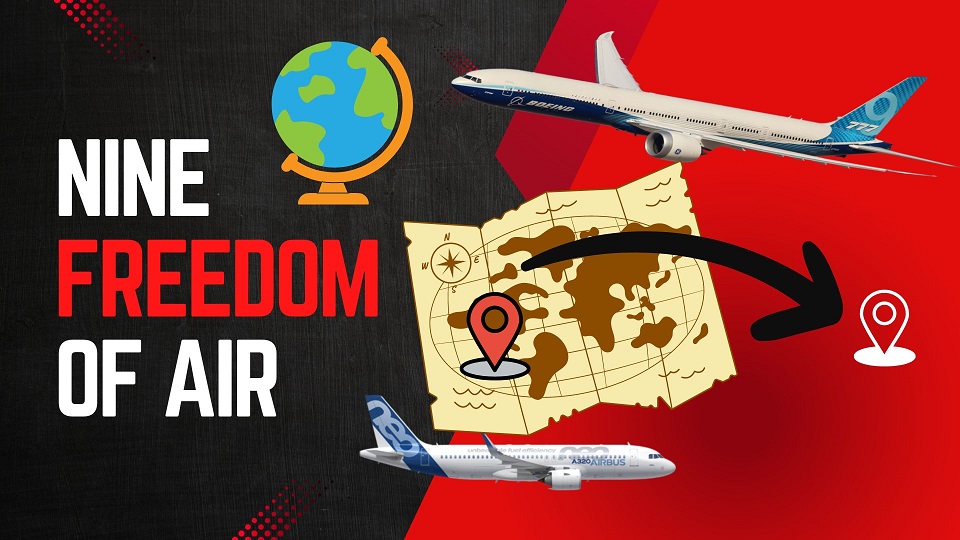
Most of us travel from one city to another city via road we need to get permission to that specific city if it is in another country like a visa or Road access permission to use its property for revenue purposes to carry passengers and Cargo. Similarly, In the airline Industry, it is also important that the Company have permission to fly and access that country whether it’s for stoppage flying above them, or Operating the passengers within that country This is called Freedom of the Air.
Some countries together they agree with certain conditions to access their Aerospace for to access for the airline to travel above their nation. If the bilateral is done for Their own countries’ airlines or other countries’ airlines. In this chapter, we understand how this thing is carried out. What all the condition has to look into that.
The Freedoms of the Air are international commercial aviation agreements (traffic rights) that grant a country’s airline(s) the privilege to enter and land in another country’s airspace. They were formulated in 1944 at an international gathering held in Chicago (known as the Chicago Convention) to establish uniformity in world air commerce. There are generally considered to be nine freedoms of the air.
Most nations of the world exchange first and second freedoms through the International Air Services Transit Agreement. The other freedoms,chase freedom airline miles when available, are usually established between countries in bilateral or multilateral air services agreements. The third and fourth freedoms are always granted together. The eighth and ninth freedoms (cabotage) have been exchanged only in limited instances
First Freedom:
The basic permission granted to an airline from one country (A) to fly through the airspace of another country (B)
Second Freedom:
The permission for a commercial airplane from country (A) to land and refuel (often called a technical stop) in another country (B).
Third Freedom :
The privilege for an airline to transport paying (Revenue) passengers from its home country (A) to another country (B).
Fourth Freedom
The rights for an airline to transport paying (Revenue )passengers from another country (B) to the airline’s home country (A).
Fifth Freedom
Fifth Freedom (also known as beyond rights): The rights for an airline to transport passengers from its home country (A) to a destination (B), then pick up and carry passengers to other international destinations (C).
Sixth Freedom:
Sixth Freedom (Combination of Third & Fourth Freedoms) The right for an airline to carry passengers or cargo between two foreign countries (B and C), provided the aircraft touches down in the airline’s home country (A).
Seventh Freedom:
The authorization for an airline to operate flights that start in a foreign country (B), skip its home country (A), and transport passengers to another international destination (C).
Eighth Freedom Air
The rights for an airline to transport passengers from one location within a country’s territory (B) to another point within the same country on a flight originating in the airline’s home country (A). This right is commonly referred to as cabotage and is notably scarce outside of Europe.
Ninth Freedom Air
The entitlement for an airline from a specific country (A) to begin a flight in a foreign country (B) and transport passengers from one location to another within that foreign country. This concept, also referred to as stand-alone cabotage, distinguishes itself from the traditional aviation definition of cabotage by not directly involving the airline’s home country.
Aviation
Air India’s B747 Makes Its Final Journey, Waving Farewell to Fans

In a poignant moment marking the end of an era in aviation history, Air India’s iconic Boeing 747 aircraft, affectionately known as the ‘Queen of the Skies,’ embarked on its ultimate journey from Mumbai’s international airport.
The departure, bound for Plainfield, USA, where it will undergo dismantling and part-stripping under the ownership of American AerSale, signals the closure of a storied chapter for the airline.
Once revered for transporting dignitaries ranging from prime ministers to presidents, the Boeing 747 has etched itself into aviation lore. Yet, as airlines worldwide pivot towards more contemporary and cost-effective aircraft, Air India’s decision to bid farewell to its remaining Boeing 747s reflects the pragmatic realities of today’s aviation landscape.
The sale of these majestic planes to AerSale represents a strategic move by Tata Group, Air India’s new custodian, towards optimizing operational efficiency and embracing modern industry standards. Out of the four aircraft sold, two will be repurposed into freighters, while the remaining pair will be meticulously disassembled to salvage valuable components.
The final flight from Mumbai witnessed a touching tribute as pilots performed a traditional ‘Wing Wave,’ symbolizing the conclusion of the Boeing 747‘s distinguished service with Air India. This poignant gesture encapsulates the deep sentiment attached to the aircraft’s departure and its significant contribution to the airline’s legacy.
As the Boeing 747 embarks on its journey to Plainfield, USA, nostalgia permeates the air, evoking memories of its maiden flight on March 22, 1971. Over five decades, Air India operated a total of 25 Boeing 747s, each leaving an indelible mark on the annals of aviation history.

